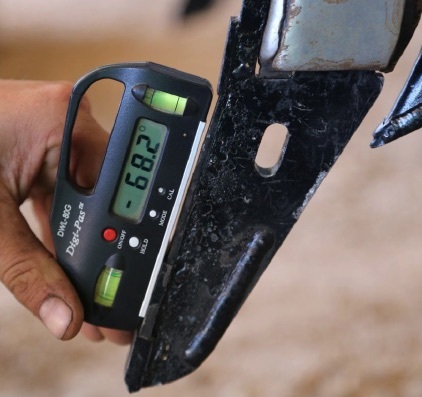Some good falls but others miss out
- By: "Farm Tender" News
- Cattle News
- Jan 23, 2020
- 613 views
- Share

This article is bought to you by Air Seeder Consulting Services.
By Angus Groves - AWB
With parts of New South Wales and Queensland drenched over the preceding week and into the weekend, it was a very welcome reprieve for many in the regions who will now have water flowing in their tanks and dams.
The low that helped steer the rainfall remained stationary over the Darling Downs which saw a lot of the major falls centred around the Northern Rivers and Northern Tablelands of NSW.
Weather stations including Grafton, Tweed Heads and Dorrigo all collected over 200mm from the 5 day rain event. While many drought stricken towns across the Northern Tablelands picked up some incredible totals, including Armidale 115mm, Tingha 101mm, Guyra 72mm and Tenterfield 67mm.
Not everyone was under significant rainfall however, and the Central West and some of the Central Western Plains will feel particularly hard done-by with only light showers. Many gauges possibly emptying more dust than water after the weekend as Sunday evening saw a particularly large dust storm blow across the Central West. There were reports of a black sky from towns including Dubbo to the north and Forbes and Parkes in the south.
Although much of this rain over the week came through as patchy storms, as predicted, most regions across New South Wales did register some rain that will help ease the pain and bring hope that a change in the weather pattern is just ahead for us all in 2020.
Ad - Get your Seeder set up the right way. Contact Air Seeder Consulting Services and have your Seeder running right before you start - Ad
So where to from here? With summer crop planting unlikely given the patchy nature of the falls, and the lateness in the planting season, it is expected that many who did get rain will look to sow summer pastures or early grazing crops, to help establish ground cover and ease the high feed cost burden.
There is already talk of farmers looking to secure long-season canola and oats, for a February plant if there is follow up rain. Another option might be forage sorghum or forage corn, for those looking to get some bulk onto paddocks to help reduce feed pressure. These plantings will only occur with the next significant chance of rainfall, and it will have to be within the next two weeks.
There may be a few brave souls under heavier storms that look to sow grain sorghum, particularly in the Central Queensland region, as they generally escape the largest risk of frost in the late autumn period when grains have filled. And there is always the option to graze or cut sorghum for silage if follow-up rains fail to materialise.
However, with limited stored moisture many farmers will want to avoid the additional planting expenses, and instead look to capture this moisture in the soil, with one eye on the winter cropping season just around the bend. The plan for many traditional croppers across the state will be to control the weeds over the next few months, and hope for the traditional break to arrive in April/May ahead of a much better winter rainfall for 2020.
Ad - Get your Seeder set up the right way. Contact Air Seeder Consulting Services and have your Seeder running right before you start - Ad











Share Ag News Via